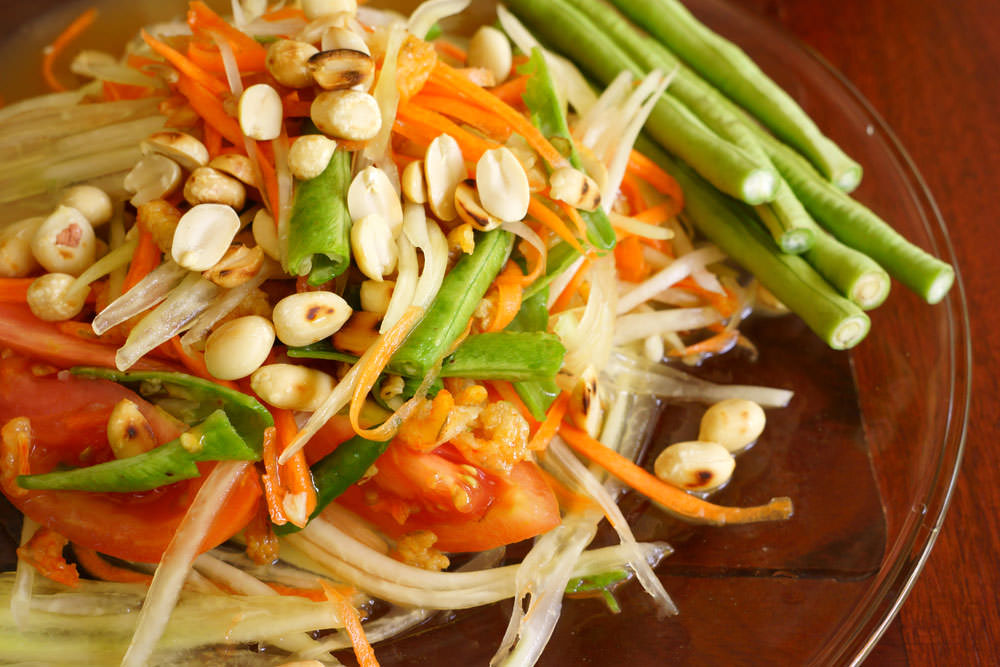
Thai cooking rejects simplicity and is about "the juggling of disparate elements to create a harmonious finish". Thai chefs characterises Thai food as demonstrating "intricacy; attention to detail; texture; color; taste; and the use of ingredients with medicinal benefits, as well as good flavor", as well as care being given to the food's appearance, smell and context
Thai cuisine is one of the most popular cuisines in the world. In 2011, seven of Thailand's popular dishes appeared on the list of the World's 50 Most Delicious Foods.Thai cuisine is more accurately described as four regional cuisines, corresponding to the four main regions of the country:
Central Thai cuisine of the flat and wet central rice-growing plains and of Bangkok, site of the former Thai kingdoms of Sukhothai and Ayutthaya, and the Dvaravati culture of the Mon people from before the arrival of Tai groups in the area.
Isan or northeastern Thai cuisine of the more arid Khorat Plateau, similar in culture to Laos and also influenced by Khmer cuisine to its south, as evidenced by the temple ruins from the time of the Khmer Empire.
Northern Thai cuisine of the verdant valleys and cool, forested mountains of the Thai highlands, once ruled by the former Lanna Kingdom and home to the majority of the ethnic groups of Thailand.
Southern Thai cuisine of the Kra Isthmus which is bordered on two sides by tropical seas, with its many islands and including the ethnic Malay, former Sultanate of Pattani in the deep south.
Like most other Asian cuisines, rice is the staple grain of Thai cuisine.